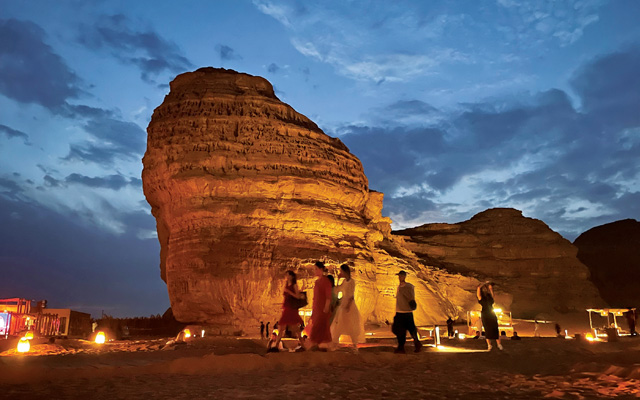Revered and loved by Muslim pilgrims, Saudi Arabia is now determined to show that it has many deeper layers to offer world explorers
Saudi Arabia is a relatively new travel destination, having opened to international tourism as recently as 2019, but the country has ambitious plans to become one of the most visited places in the world by committing US$800 billion to develop tourism nationwide within the next decade.
Tourism is a core component of Saudi Arabia’s Vision 2030, a government programme designed to develop a modern and diversified economy. The country’s Ministry of Tourism, which was founded in 2020, aims to leverage tourism to create one million jobs, enable accelerated and sustainable economic growth, host 70 million international tourists by 2030 (or 150 million including domestic tourists), and amplify the tourism sector’s GDP contribution from the current three per cent to 10.

Saudi Arabia welcomed 16.6 million tourists in 2022, indicating a long way to go in the coming seven years, but its fledgling industry is enjoying rapid growth. The country jumped 12 places to be ranked 13th globally in international tourist arrivals in 2022. In the same year, it ranked 11th globally in international tourism receipts, up 16 places since 2019, according to the UNWTO’s World Tourism Barometer.
Moreover, the country received 7.8 million international tourists in 1Q2023, a 64 per cent increase over the same period in 2019, according to the Saudi Press Agency.
Europe and North America are among the key tourism markets globally for Saudi Arabia, but Asia-Pacific is “pivotal” for the country’s growth as an international tourist destination, Alhasan Aldabbagh, president of Asia Pacific markets at the Saudi Tourism Authority, told TTG Asia.
As of September, arrivals from Asia-Pacific markets were up 11 per cent year-on-year, with calendar 2023 numbers expected to exceed 2019 numbers by 15 per cent. The largest contributor to growth has been Umrah, the pilgrimage to Mecca for Muslims to renew their faith, followed by trips for leisure and to visit family or friends, according to Aldabbagh.
Looking ahead, he is eyeing India to provide two million visitors in 2023 and seven million by 2030 to enjoy “leisure, culture and heritage, and adventure experiences.”
In 2022, 900,000 Indian tourists visited Saudi Arabia, spending more than any other source country, making them an important target market.
Pakistan, China and Bangladesh are the other top source markets, with Saudi Arabia targeting 3.5 million, three million and 2.6 million visitors respectively from these countries annually by 2030.

To reach its core markets, Saudi Arabia has opened offices in India, Pakistan, Bangladesh, Malaysia, China, South Korea, Japan and Australia.
Globally, the Saudi Tourism Authority is targeting each market according to seven prime segments across two categories: leisure and Umrah.
Among the efforts to grow tourism are 14 giga projects under development. The largest, sized at 10,200 square miles, is Neom. One of its islands, Sindhala, will open in 2024, offering “a year-long vibrant destination, a gateway to the Red Sea,” said Aldabbagh, adding that it will include a marina and yacht club, beach club, spa, luxury hotels and golf courses.
The country’s ancient history will also appeal, he said, giving the example of AlUla, “a living museum of preserved tombs, sandstone outcrops and historic dwellings that hold 200,000 years of largely unexplored history”.
“What was once a country known almost exclusively for being the birthplace of Islam, now offers an unrivalled tourist experience like no other,” he concluded.




















